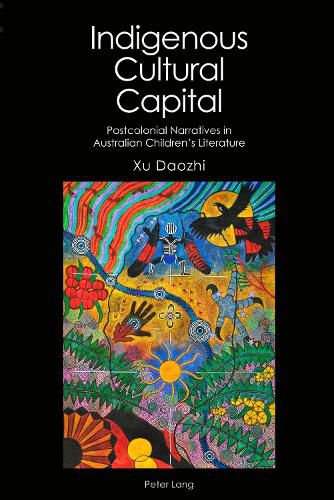Readings Newsletter
Become a Readings Member to make your shopping experience even easier.
Sign in or sign up for free!
You’re not far away from qualifying for FREE standard shipping within Australia
You’ve qualified for FREE standard shipping within Australia
The cart is loading…






This title is printed to order. This book may have been self-published. If so, we cannot guarantee the quality of the content. In the main most books will have gone through the editing process however some may not. We therefore suggest that you be aware of this before ordering this book. If in doubt check either the author or publisher’s details as we are unable to accept any returns unless they are faulty. Please contact us if you have any questions.
Children’s literature enables young readers to acculturate to socially desirable forms of knowledge, values and ideologies. An increasing number of children’s books with Aboriginal themes and motifs, written by Indigenous and non-Indigenous writers in the post-Mabo era, seek to rewrite Aboriginal history through realistic or imaginative modes of expression and, as a counter-discursive agency, they open a path to inculcate young minds with Aboriginal culture and knowledge in a postcolonial context. Drawing on Pierre Bourdieu’s concept of cultural capital, Indigenous Cultural Capital: Postcolonial Narratives in Post-Mabo Australian Children’s Literature explores how Aboriginal people’s histories and cultures are deployed, represented, and transmitted as
Indigenous cultural capital
for young readers, with the purpose of illuminating the complex relations between Aboriginal agency and dominant forces in the postcolonial contact zone and identifying possible tactics of resistance within the domination. The notion of Indigenous cultural capital provides a fresh perspective in the postcolonial readings of Australian children’s books.
$9.00 standard shipping within Australia
FREE standard shipping within Australia for orders over $100.00
Express & International shipping calculated at checkout
This title is printed to order. This book may have been self-published. If so, we cannot guarantee the quality of the content. In the main most books will have gone through the editing process however some may not. We therefore suggest that you be aware of this before ordering this book. If in doubt check either the author or publisher’s details as we are unable to accept any returns unless they are faulty. Please contact us if you have any questions.
Children’s literature enables young readers to acculturate to socially desirable forms of knowledge, values and ideologies. An increasing number of children’s books with Aboriginal themes and motifs, written by Indigenous and non-Indigenous writers in the post-Mabo era, seek to rewrite Aboriginal history through realistic or imaginative modes of expression and, as a counter-discursive agency, they open a path to inculcate young minds with Aboriginal culture and knowledge in a postcolonial context. Drawing on Pierre Bourdieu’s concept of cultural capital, Indigenous Cultural Capital: Postcolonial Narratives in Post-Mabo Australian Children’s Literature explores how Aboriginal people’s histories and cultures are deployed, represented, and transmitted as
Indigenous cultural capital
for young readers, with the purpose of illuminating the complex relations between Aboriginal agency and dominant forces in the postcolonial contact zone and identifying possible tactics of resistance within the domination. The notion of Indigenous cultural capital provides a fresh perspective in the postcolonial readings of Australian children’s books.